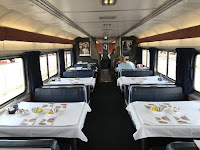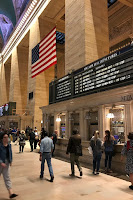You may be told that trains aren't as fast as flying or as cheap as buses (often true), but that's missing the point. Like hiking, camping, bicycling and boating, trains provide a unique and rewarding travel experience. As the saying goes, the journey is as important as the destination.
Watching the scenery is mesmerizing, especially when you're crossing the plains, deserts and wide-open spaces out west. People sit at the windows for hours, in a state of viewing enjoyment that's both exhilarating and calming.
People on trains tend to be relaxed and mellow. It's an egalitarian environment and passengers are friendly and polite. They aren't competing with each other to get to the head of a line and they aren't trying to show off status symbols. They talk about their travels, their hometowns, their backgrounds and their families. Controversial subjects stay in the background.
Time goes by surprisingly quickly on a train. I brought several books with me on my trip but didn't end up reading them much. My time was spent watching the scenery, talking to people, enjoying meals in the dining car, reading about things to do at the next destination, and trying to capture the interesting aspects of train travel on my blog.
When you're taking a vacation trip on a train, the vacation starts when you get on the train. When I travel long distances by plane or car, I tend to arrive a little frazzled, anxious and stiff. When you travel by train, you tend to arrive relaxed and refreshed.
If you haven't tried train travel, you should think about it for a future trip.
 |
| Amtrak’s Coast Starlight in San Luis Obispo County, California |





















































